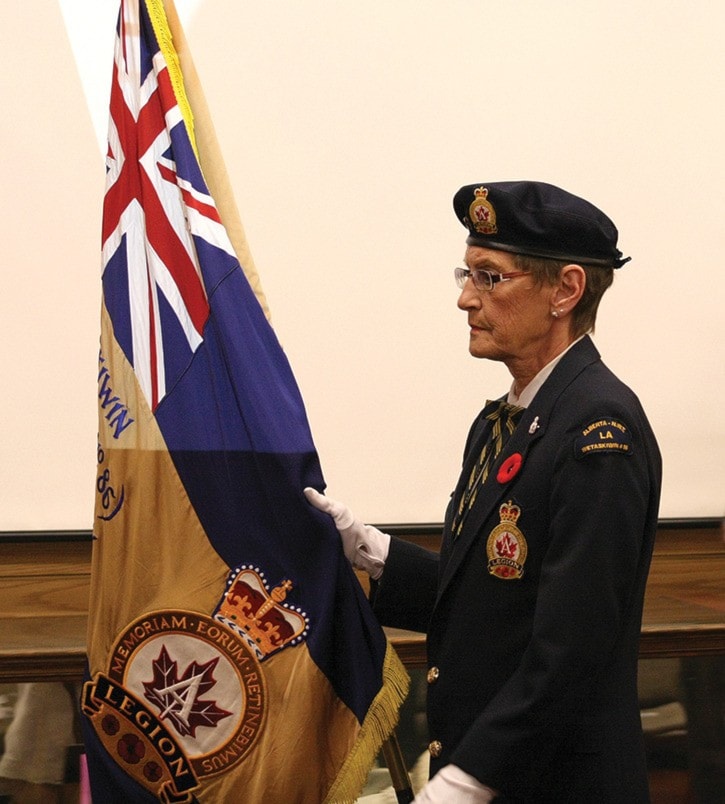A special Remembrance Day program honouring peacekeepers and Aboriginal veterans was held at the Wetaskiwin Heritage Museum on Nov. 5.
Karen Aberle, executive director and chief curator opened the ceremony with a small educational piece on Remembrance Day and why it is so important for Canada’s free citizens to wear a poppy and take time to remember Canada’s veterans.
Aberle says poppies as a symbol of remembrance mainly come from John McCrae’s In Flanders Fields. The poppies thrived in the desolate earth torn apart by war. “Their colours stood out against the barren terrain,” said Aberle.
She continued, the poppy pledges a person’s remembrance to the men and woman who sacrificed their lives to Canada and its future. “The poppy remains an enduring symbol … for those who served or fell in service of their country.”
Aboriginal veterans
In honour of the aboriginal Canadian veterans who continually went to war for Canada, despite no mandatory conscription, Maskwacis community member Sarah Potts stood to speak to the importance of the Maskwacis Veterans Memorial Monument, which was unveiled last year.
“I believe it’s the first one in Alberta,” said Potts.
Even during the Second World War Canadian aboriginals were not able to vote and were not considered legal citizens of Canada yet they still risked their lives in war.
The idea of the cenotaph first came about in the 1980s when a group of chiefs began talking about native veterans. “They wanted to honour our members as well,” said Potts.
“It’s 2015, it’s time we move forward,” she added.
Murray Potts also took to the stand to talk about his father and two uncles who all served during Canadian conflicts.
Potts told the audience each year Maskwacis hold a veterans powwow in the community. “Every year I go there and carry my dad’s photo around.”
While Pott’s father was serving in Germany he was hit in the back and back of the leg by shrapnel from an exploding bomb. He survived and in 1953 was given an honourable discharge.
“My dad was willing to go to war,” said Potts. He added it was his family that was being specifically mentioned during the ceremony but there are many more from the community who also fought for Canada and each of them deserve remembrance as well.
Peacekeepers
Museum program co-ordinator Megan Patterson is the daughter of a peacekeeper and took to the podium to talk about her father. “I will do my best to emulate my father.”
As a UN peacekeeper posted in Lebanon in 1978, Patterson’s father routinely travelled roads outside of the neutral zone and despite being a symbol for peace and humanitarian relief was not always received with open arms. “There was often hostility coming from all directions.”
Despite the atmosphere, Patterson says her father bonded with members of many different countries, often over a game of volleyball.
“Most importantly my father gained a fundamental respect for cultural diversity,” said Patterson.
However, Patterson says peacekeepers are not always given the same respect as their war-veteran counterparts, which is a part of the reason they were included in this year’s Heritage Museum Remembrance Day theme.
Canadian Military
The Remembrance Day program also included a piece by Cpl. Joe Bremner, who spoke on behalf of the military and the importance of honouring Canadian veterans, past, present and future.
Bremner says Canadian soldiers enlist for a variety of reasons but most simply to serve their country. “We have chosen to wear a uniform and are willing to die for our country.”
“We are willing to put the service and security of Canada ahead of our own. We accept the risks willingly,” he added.
